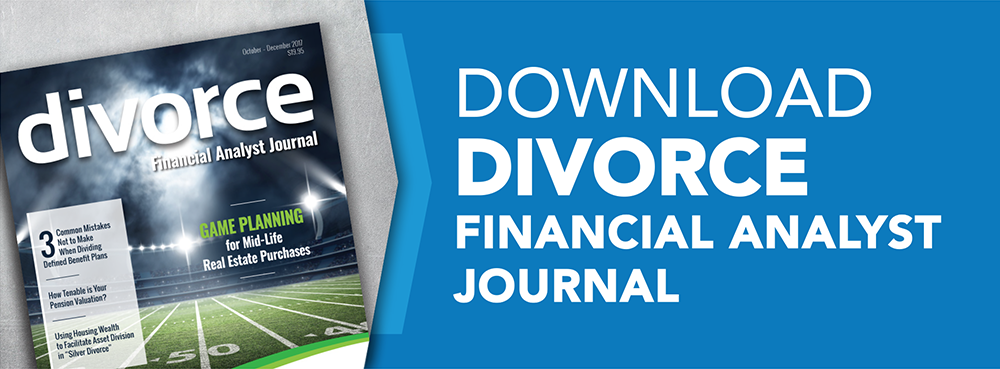Why Using a CDFA to Prepare a Financial Affidavit Will Change the Outcome
By Mary Salisbury On 10/07/2022
Today I was looking over a Financial Affidavit used in my state and was reminded of the difference in the depth of information and, subsequently, the analysis that I perform when I do my financial analysis versus what clients get when they prepare their Financial Affidavit. (Note: Financial Affidavits are called different things in different states. For example, in North Carolina, it’s called an “Affidavit of Financial Standing,” in New Jersey, it’s called a “Case Information Statement (CIS),” and in New York, it’s called a “Statement of Net Worth.”)
A Financial Affidavit is a summary of what you spend, what you earn, your debt, and your assets. It’s a snapshot of what your financial picture looks like today. People going through a divorce are often overwhelmed at the prospect of going through their expenses to find out what they actually spend, particularly if they have never lived on a budget or been involved in the family finances. People can do a lot of guessing, take shortcuts “just to get it done,” and forget things. Their attorney is not going to double-check their work, and only the most glaring anomalies will be questioned. The amount of child and spousal support they were counting on can end up being far less than they need because it is based, in large part, on the accuracy of the Financial Affidavit.
This is where involving a CDFA can be so beneficial. I’ll work closely with my client to help list out their budget items and remind them of all those expenses that people tend to forget about, like lawn and snow removal service, annual termite service, annual car registration fees, summer camp, and paying your CPA every year. These are just a few examples that can add up and have a big effect when you depend on support. If you don’t ask for an expense to be covered, it won’t be! An even better approach is to prepare a Lifestyle Analysis where I will take the last 3 to 5 years of bank and credit card statements and summarize exactly sum up the spending and categorize them. This verifies the exact spending for the Judge, and from my experience, they love them.
While a Financial Affidavit will ask for actual and anticipated expenses, it doesn’t allow for an examination of changing expenses through the years. Expenses are not static, and negotiations can be made based on realistic projections about how expenses will change. For instance, a couple might know that the car payment on the husband’s car will end in 3 years or that the wife’s car is about to die and that she will need a new one. The wife might want to buy her own home but might need a couple of years of support payments before she can qualify for a loan and make that purchase. One child might be headed for college next year, and support payments will end, but college-related tuition or support will start. All these things can be addressed in my software, where individual expenses can be started or stopped in any given year, up to 20 years out. My clients don’t just see anticipated expenses in one snapshot because that is not real life.
A final example is how I examine how income and expenses will affect the long-term net worth of both spouses. My analysis might show that based on a given settlement proposal, one spouse may have to dip into his or her half of assets to make ends meet, and his or her net worth and capital will decline rather than increase. (See the graph pictured with this article for an example). This is incredibly enlightening, particularly in long-term marriages, and makes negotiations easier when one spouse will clearly have far more net worth at retirement than the other. Many of my clients have been in long-term (20-plus years) marriages, are over 50, and cannot afford to make financial mistakes in their divorce.
These are just a few examples, but they apply to the majority of the cases I handle. Unfortunately, a Judge (and opposing counsel) may not care about projected net worth and cash flow, but that is where meditating is so much fairer. Using a CDFA in settlement negotiations as either an advocate or as a financial neutral and mediator is a necessity if you want to thoroughly discuss and understand the financial effect of your divorce.
Tagged with: financial affidavit, family law financial affidavit, cdfa, idfa, certified divorce financial analyst
Blog Disclaimer: The opinions expressed within these blog posts are solely the author’s and do not reflect the opinions and beliefs of the Certitrek, IDFA or its affiliates.

 800.875.1760
800.875.1760










